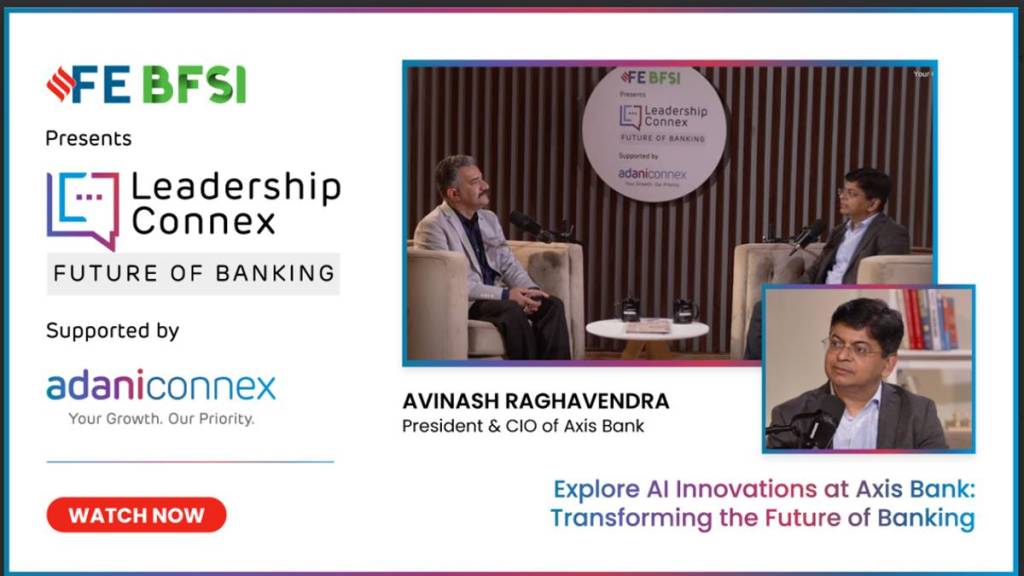As technology evolves, the future of banking is turning out to be quite exciting for the tech leaders of banks. From the ATM being seen as a novelty in the early 1990s to transitioning to internet banking and then to banking on the phone, each tech wave has brought with it innovation and convenience to banking. But on the backend, CIOs, CTOs and the tech experts have been on their toes to ensure each tech wave is completely secure, yet convenient.
Avinash Raghavendra, President and CIO of Axis Bank, speaking to Financial Express in the LeadershipConneX podcast series says the tech waves are coming in quick succession. From innovations every 2-3 years earlier, there is now a new tech available every couple of months. “These waves have helped banking grow in the country. Frankly, if you look at the last decade or so, you will essentially find that even the way the country has sort of leap-frogged forward is greatly due to the technology backbone, which has essentially come through the policy makers. UPI is being seen as one of the forefronts in technology. It is ubiquitous,” says Raghavendra.
The unified payments interface developed by the National Payments Corporation of India (NPCI), in fact, has put India ahead of the Western world when it comes to banking technology, with 22 countries globally now evaluating it, and some countries even making it interoperable for foreign transactions as well.
But what’s likely to impact banking even more is artificial intelligence (AI) or generative AI (Gen AI). Raghavendra says that AI isn’t new to banks. Classical AI started about 7-8 years ago in banks, where it was used in areas like credit policy decisioning and fraud rules and algorithms. “Over the last 15 months, we have essentially seen a massive wave towards consumerisation of AI. That is a big difference and a large language model is obviously a very different kind of an AI. Whatever we were using in the past, the opportunities have sort of simply exploded right now. At Axis, about a year back, we decided to set up a competency centre which is going to focus purely on Gen AI,” he says. Raghavendra says that the bank wants to be very sure about the tech before exposing it to consumers.
He says the bank has multiple lines of defences with its cybersecurity and does constant digital transaction monitoring to identify threats early. “When it comes
to the transaction fraud side of it, the fraudsters ability to innovate is mindboggling.” New forms of threats every day means that the bank has to constantly collaborate with agencies and deploy technology to monitor transactions. This is where AI can step in and provide analytics basis transaction patterns.
With the BFSI industry being highly regulated, bankers have to innovate within the framework of regulations. There are opportunities to partner with fintech players when it comes to innovation as well, but banks have the upper hand when it comes to security in transactions. “There are areas in which we believe we are fairly strong. We are a 30-year-old bank, so there is a wealth of data and we understand risk better,” he says.
As technology in banking expands, so does the need for a sustainable future and low carbon footprint. Axis Bank, Raghavendra says, is working with partners to ensure the datacentres are sustainable and have a low-carbon footprint. When it comes to the future of banking, Raghavendra sees Gen AI and quantum computing to a certain extent coming together with sophisticated algorithms that will not only have commercial use cases, but will also be far more secure. “Quantum is going to introduce far finer insights into transactions than what we have seen in the past. We already have some proofs of concept, which we believe is fairly exciting,” says Raghavendra. He adds, that as exciting as the future of banking may be, one has to be accepting of the change – be it in technology or the skills required.
“At the end of the day, banking is all around customer centricity and collaboration,” he says signing off.


